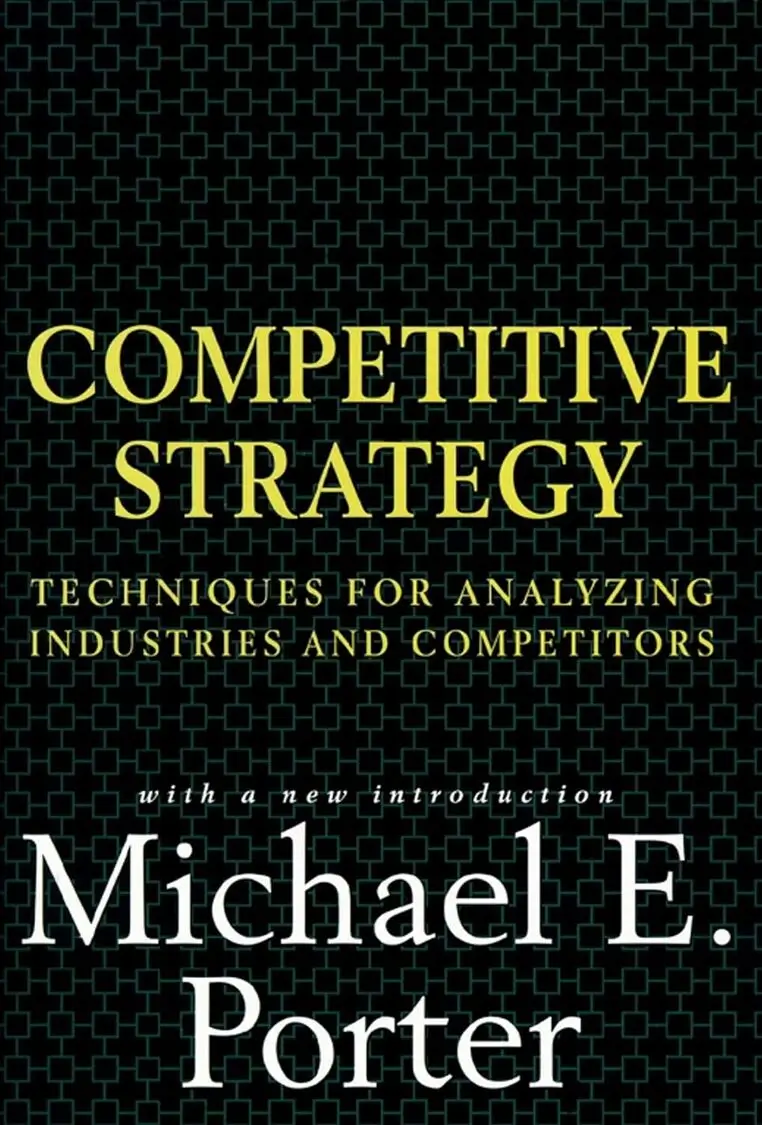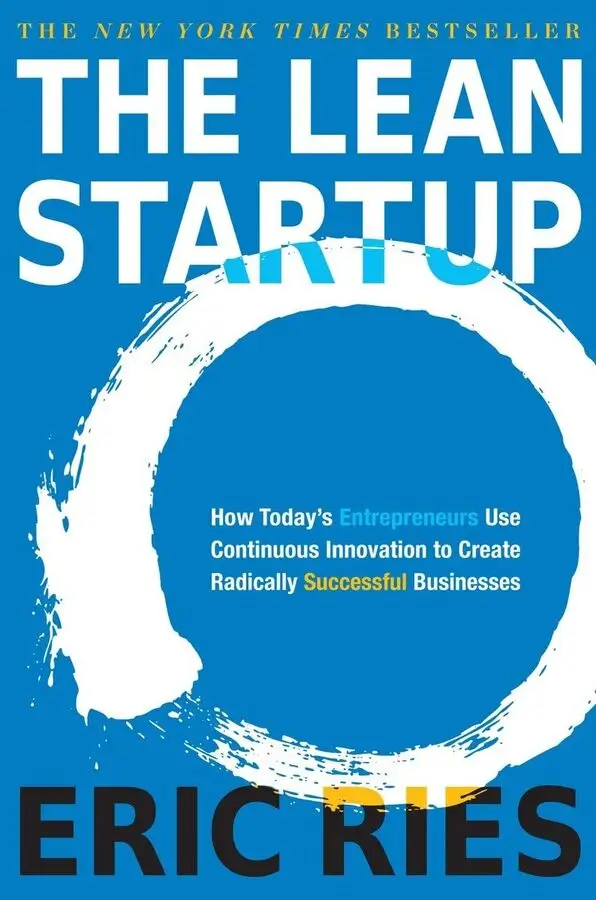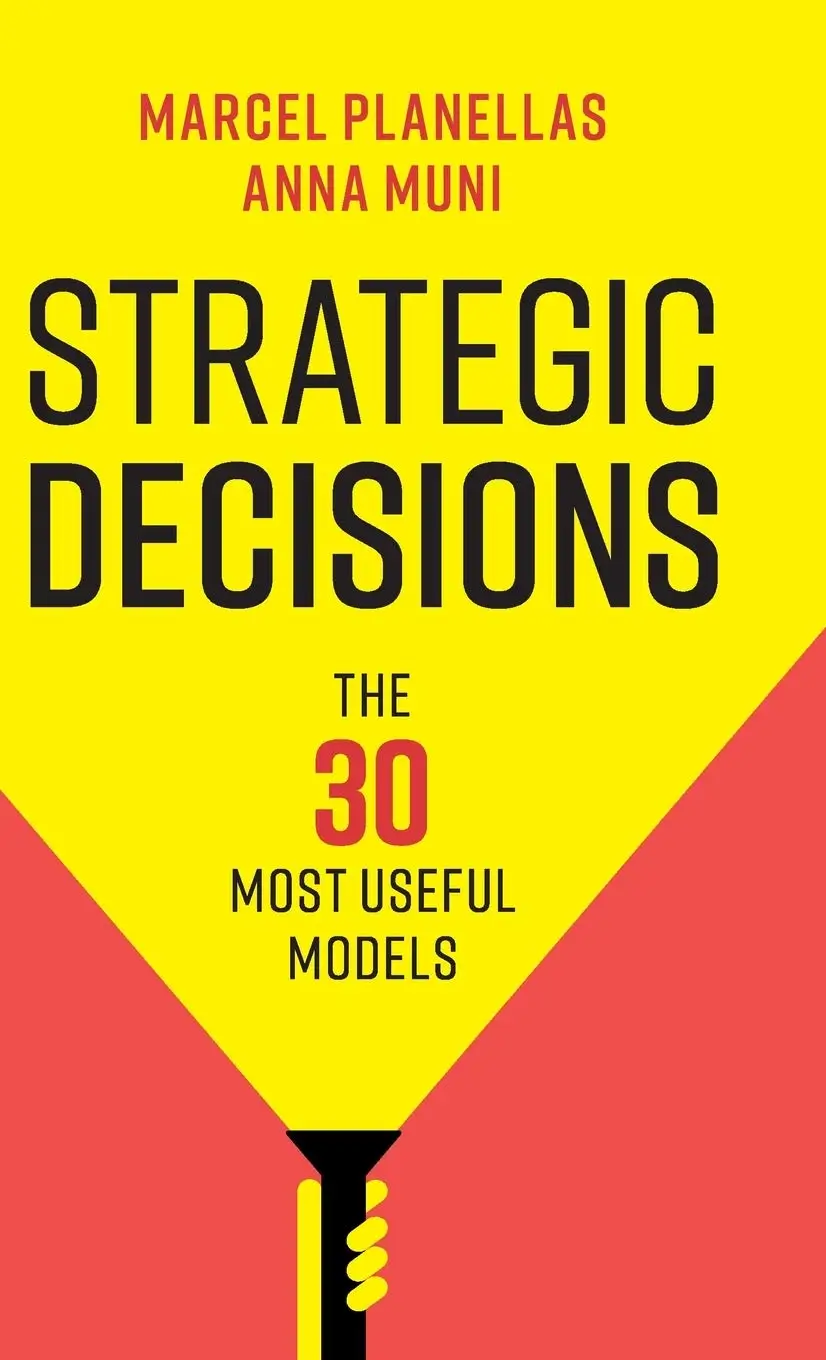 Strategic Planning Books." width="400" height="400" />
Strategic Planning Books." width="400" height="400" /> Strategic Planning Books." width="400" height="400" />
Strategic Planning Books." width="400" height="400" />
Feeling stuck in a rut, unsure of how to reach your goals or make lasting change in your life?
You’ve tried the quick fixes, the latest trends, but nothing seems to actually move the needle. It’s frustrating!
The most successful people in the world are masters of strategic planning. They have a roadmap, a playbook, to take them from where they are to where they want to be. Luckily, you can learn from the best.
These 15 groundbreaking books will revolutionize the way you think about planning and reaching your full potential.
"The best way to predict the future is to create it."
Peter Drucker

Competitive Strategy Michael E. Porter

Good Strategy Bad Strategy Richard Rumelt

Business Model Generation Alexander Osterwalder and Yves Pigneur

Playing to Win A.G. Lafley and Roger L. Martin

HBR's 10 Must Reads on Strategy Harvard Business Review
Disclaimer: The score of these books are based on strategic planning principles, insights gathered from online reviews: Reddit, Quora and GoodReads, and our personal opinions. If you choose to buy any of these books, we will earn a small commission at no additional cost to you.
”Competitive Strategy” by Michael E. Porter is a foundational text for understanding the forces that shape industries and drive competition.
Porter provides timeless frameworks for analyzing your competitive landscape, identifying strategic options, and building a sustainable competitive advantage.
If you are serious about the long-term success of any business, this book will be your guiding light. It delves into cost leadership, differentiation, and finding your focused niche, providing a blueprint for outsmarting your competition.

| Pros | Cons |
|---|---|
| Provides timeless, fundamental frameworks for analyzing industries | Can be somewhat dense and academic in writing style |
| Offers clear strategies for achieving competitive advantage | May be less relevant for small businesses in highly niche markets |
| Emphasizes long-term strategic thinking | Less focus on tactical execution and implementation |
"Risk comes from not knowing what you’re doing."
Warren Buffett
Richard Rumelt cuts through the fluff and buzzwords that often plague modern business strategy.
He offers a sharp and insightful look into the difference between truly effective strategies and the vague, feel-good statements that masquerade as strategy.
The book emphasizes identifying core challenges, creating a coherent action plan, and leveraging your unique advantages.
Rumelt’s focus on focused execution and diagnosis makes this book a must-read for leaders who want to move from planning to action.

| Pros | Cons |
|---|---|
| Clearly distinguishes “good” vs. “bad” strategies | Can be critical of overly ambitious or unrealistic strategies |
| Offers practical frameworks for strategic planning | Some case studies might feel a bit dated |
| Emphasizes focused action and leveraging strengths | Less focus on change management and adaptability |
A study from the University of Liverpool found that reading for at least 30 minutes a week can increase life satisfaction, boost self-esteem, and enhance general knowledge and conversational skills.
This modern classic revolutionized how businesses think about their structure and operations. Osterwalder and Pigneur introduced the powerful Business Model Canvas, a visual tool for designing, analyzing, and innovating business models.
Whether you’re starting a new venture or transforming an existing company, this book will reshape how you think about the core elements driving your success.
It emphasizes understanding value propositions, customer segments, and revenue streams.

| Pros | Cons |
|---|---|
| Provides the highly versatile Business Model Canvas framework | Some sections might feel less relevant to established businesses |
| Uses visual tools to simplify complex concepts | Can be too conceptual at times for those who want immediate action steps |
| Offers a structured approach to business model innovation | Might require some adaptation for specific industries or niches |
Free Growth Mindset Book Finder
A.G. Lafley, the former CEO of Procter & Gamble, and strategic advisor Roger L. Martin share the secrets behind P&G’s incredible success story.
They demystify strategy, emphasizing the importance of making clear choices about where to compete and how to win. This book offers a practical, actionable framework for developing winning strategies for organizations of any size.
It stresses the importance of focusing on core strengths and defining your winning aspiration.

| Pros | Cons |
|---|---|
| Offers a clear, step-by-step framework for making strategic choices | Some examples drawn from P&G might be less relevant to smaller businesses |
| Emphasizes the importance of clarity and focus in strategy | May feel repetitive in sections for those familiar with strategic concepts |
| Provides real-world examples to illustrate concepts | Can be a bit prescriptive in its approach to strategy |
"The essence of strategy is choosing what not to do."
Michael Porter
This curated collection from the Harvard Business Review offers a crash course in essential strategic insights.
Featuring articles by leading thinkers, including Michael E. Porter, it covers topics like competitive positioning, crafting a vision, and executing strategy.
If you’re short on time but want to grasp the fundamentals of strategic planning, this book offers a curated selection of the best thinking on the topic. It distills complex strategic concepts into digestible and actionable advice.

| Pros | Cons |
|---|---|
| Offers a variety of perspectives on strategy from respected voices | May feel repetitive for those already deeply familiar with strategy |
| Provides a quick and accessible introduction to foundational concepts | Less in-depth analysis than single-author books |
| Curated by HBR ensuring high-quality and relevant content | Some articles might feel dated as strategic thinking evolves |
Strategic planning is crucial for aligning an organization’s mission, vision, and goals, with 77% of successful companies having mechanisms to translate their strategy into operational terms and evaluate it daily. (Source: Asana)
This groundbreaking book changed how entrepreneurs and innovators approach building new businesses. Eric Ries introduced the concept of ‘validated learning,’ emphasizing the importance of testing assumptions, collecting data, and iterating quickly.
If you are launching a new venture or product, this book will help you embrace experimentation, minimize waste, and maximize your chances of success.
It highlights the importance of pivoting, building Minimum Viable Products (MVPs) and relentlessly focusing on customer feedback.

| Pros | Cons |
|---|---|
| Offers a practical framework for building and testing products efficiently | Some concepts might feel less applicable to non-tech ventures |
| Emphasizes customer feedback and data-driven decision making | Might be less relevant for businesses with long development cycles |
| Champions rapid experimentation and adaptation | Can sometimes be overly focused on speed over long-term sustainability for certain types of businesses |
Patrick Bet-David draws on his experience as a successful entrepreneur to provide a practical guide to strategic thinking.
He emphasizes clarity, strategy, growth, team building, and calculated risk-taking. Whether you’re looking to ignite growth within your current business or find your place in the entrepreneurial world, this book offers insights and actionable advice.
Bet-David uses the analogy of chess to illustrate the importance of forward-thinking and anticipating multiple moves ahead.

| Pros | Cons |
|---|---|
| Offers clear strategies and actionable steps | Can sometimes feel overly focused on rapid growth |
| Draws on relatable real-world examples | Might seem less relevant to some specialized industries |
| Written in a motivational and engaging style | May lack the depth of some classic strategy texts |
"Every minute you spend in planning saves 10 minutes in execution; this gives you a 1,000 percent return on energy!"
Brian Tracy
This classic business book explores the common traits of companies that have endured for decades, outperforming their peers and thriving throughout changing times.
Collins and Porras dispel myths about the need for a charismatic leader or revolutionary product ideas, focusing instead on core values, strong culture, and the ability to adapt.
If you want to understand the principles of long-lasting success, this book is essential reading. It reveals that visionary companies are built on strong foundations and a relentless focus on progress.

| Pros | Cons |
|---|---|
| Offers timeless, widely applicable principles of enduring companies | Some of the case studies might feel dated by now |
| Rigorously researched and based on empirical data | Can be somewhat dense and academic in writing style |
| Emphasizes the importance of core values and company culture | Less focus on short-term tactical maneuvers |
”Strategic Management: Concepts and Cases: Competitiveness and Globalization” by Michael Hitt, R. Duane Ireland, and Robert Hoskisson offers a comprehensive exploration of strategic management within a global context.
This book combines theory with practical applications to illustrate how companies can achieve competitive advantage in the global marketplace. It covers a range of topics, including environmental scanning, strategy formulation, strategy implementation, and evaluation and control.
With its case studies and real-world examples, this book provides insights into how successful companies navigate the complexities of global competition.

| Pros | Cons |
|---|---|
| Comprehensive coverage of strategic management theory and practice | Can be complex and detailed, potentially overwhelming for beginners |
| Includes current case studies and examples from around the world | Some readers might find the global focus less applicable to local businesses |
| Helps readers understand the dynamics of global competitiveness | May require a solid background in business concepts to fully appreciate |
Free Growth Mindset Book Finder
This influential strategy book argues against fighting in existing crowded markets (“red oceans”).
Instead, authors Kim and Mauborgne advocate for creating entirely new market spaces (“blue oceans”) where demand is uncontested, and your offering is highly differentiated.
Blue Ocean Strategy emphasizes offering a leap in value to customers while simultaneously lowering your costs. This creates profitable growth and makes the competition less relevant.

| Pros | Cons |
|---|---|
| Provides a fresh framework for thinking strategically about markets and value creation | May be challenging to implement as it requires a shift from traditional competitive mindsets |
| Backed by research studying successful strategic moves across industries | Some examples may seem slightly outdated in today’s fast-changing business landscape |
| Offers tools and methods to systematically analyze markets and create differentiation | Can feel abstract with a need for tailored application to specific businesses |
"It is in your moments of decision that your destiny is shaped."
Tony Robbins
In this highly influential work, Clayton M. Christensen reveals why even the most successful, well-managed companies sometimes stumble when faced with disruptive innovation.
He explains that focusing on satisfying current customers and sustaining current products can blind companies to emerging technologies that initially appear less sophisticated and target lower-end markets.
The Innovator’s Dilemma provides a framework to understand why established firms might miss disruptive innovations that subsequently transform industries.

| Pros | Cons |
|---|---|
| Offers a clear and compelling explanation of how disruptive innovation displaces market leaders. | Some critics argue that not all disruption is inevitable for incumbents. |
| Provides a valuable framework for analyzing potential technological threats. | Case studies may feel slightly dated in our rapidly-evolving technological landscape. |
| Challenges traditional assumptions about sustaining success through continuous product improvement. | Requires significant strategic change for established companies to fully implement its recommendations. |
”Strategic Decisions: The 30 Most Useful Models” by Bernard Garrette, Corey Phelps, and Olivier Sibony is a practical guide that presents thirty strategic models to aid in decision-making.
This book serves as a toolkit for navigating complex business scenarios, providing readers with a structured approach to making effective strategic decisions.
Each model is explained through clear, concise descriptions and supported by real-life case studies to illustrate its application in various business contexts.

| Pros | Cons |
|---|---|
| Provides a wide range of strategic models in one volume | Some models may be too simplistic for very complex business situations |
| Case studies and examples help in understanding the application of models | Can be perceived as more of a reference book than a continuous read |
| Designed for practical use and quick reference in strategic decision-making | May not delve deeply into the theoretical underpinnings of each model |
”The Art of Strategy: A Game Theorist’s Guide to Success in Business and Life” by Avinash K. Dixit and Barry J. Nalebuff is an enlightening book that translates the complex concepts of game theory into actionable strategies for everyday challenges.
Dixit and Nalebuff use a plethora of examples from business, politics, and everyday life to demonstrate how game theory can provide insights into strategic decision-making.
The book emphasizes the importance of anticipating competitors’ moves, understanding the dynamics of cooperation and competition, and strategically positioning oneself in various scenarios.

| Pros | Cons |
|---|---|
| Makes complex game theory concepts accessible and applicable | Some readers may find the game theory examples too abstract or theoretical |
| Engaging examples from a variety of real-world situations | May require a second read to fully grasp the intricate concepts |
| Encourages strategic thinking in personal and professional life | Some sections might be too detailed for readers seeking only a casual understanding |
"Strategy is a pattern in a stream of decisions."
Henry Mintzberg
”Crossing the Chasm” by Geoffrey A. Moore is a seminal work in the field of technology marketing. Moore’s book addresses the challenges faced by start-ups in bridging the gap between early adopters and the early majority in the technology adoption lifecycle.
This edition (3rd) updates the classic text with new examples relevant to the current market and technology trends, providing strategies for companies to successfully market and sell innovative products.
Moore focuses on the importance of understanding customer segments and creating marketing strategies that cater specifically to the mainstream market’s needs.

| Pros | Cons |
|---|---|
| Provides a detailed roadmap for transitioning technology products to the mainstream market | Some examples may seem dated despite updates in the latest edition |
| Offers actionable strategies and insights into market dynamics | Primarily focused on technology and innovation sectors, which may limit its applicability |
| Updated examples and case studies make it relevant to current market trends | Can be somewhat repetitive in driving home the core concepts |
Reading can significantly impact child development, with just six minutes of reading daily enhancing early literacy skills. (Source: Renaissance)
”Team-Based Strategic Planning: A Complete Guide to Structuring, Facilitating, and Implementing the Process” by C. Davis Fogg offers a framework for conducting strategic planning in a team environment.
The book promotes the collaborative aspect of strategic planning, guiding readers through the process of creating and executing effective strategies within teams.
Fogg outlines a step-by-step approach to planning, from initial brainstorming to final implementation, ensuring that all team members are engaged and contributing to the strategy.
This book is rich in tools and techniques for facilitating team discussions, decision-making, and problem-solving, making it a valuable resource for anyone involved in team-based planning.

| Pros | Cons |
|---|---|
| Detailed guidance on structuring and facilitating team-based planning sessions | May be overly detailed for those looking for a quick, simple guide |
| Emphasizes collaboration and inclusivity in strategic planning | Specific focus on team-based planning might not appeal to solo strategists |
| Practical tools and techniques for effective team interaction and decision-making | Some readers might find the approach too rigid or formal for more dynamic or agile environments |

The Best Goal Setting Books to Transform your Life
Goal Setting Growth MindsetWe all know that books are a fantastic way to learn, start making big changes in your life reading the best Goal Setting books.

Essential Strategic Planning Activities for Business Success
Goal Setting Growth MindsetStrategic planning activities are essential for organizations to set goals, make informed decisions, and effectively allocate resources.

15 SMART Objectives Benefits to Effectively Achieve Your Goals
Goal Setting Growth MindsetDiscover the 15 benefits of using SMART objectives that successful people implement in their lives. Gain insights on how SMART objectives can help you achieve your goals effectively.
Become a Rocket!
All successful people start with a first step.